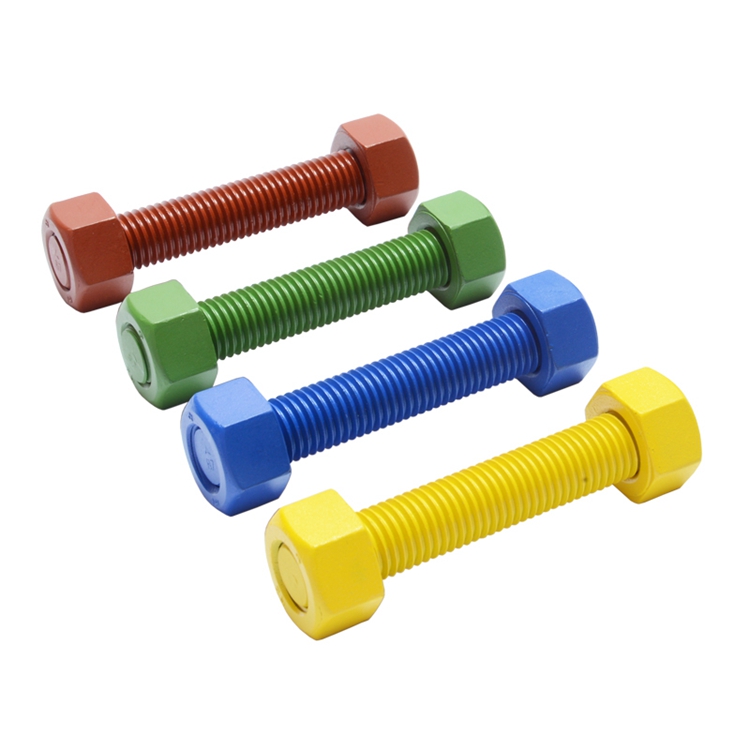spring loaded screws
Nov . 16, 2024 04:45 Back to list
spring loaded screws
The Importance of Spring Loaded Screws in Modern Engineering
In the realm of engineering and manufacturing, the minutiae of design can significantly influence the functionality and efficiency of a product. One such detail that engineers often consider is the use of spring loaded screws. These innovative fasteners are not merely standard screws; they offer unique functionalities that enhance the performance of various mechanical assemblies.
What are Spring Loaded Screws?
Spring loaded screws are specialized fasteners designed with an internal spring mechanism. This design allows them to compensate for changes in the material they're fastening, especially in applications that experience vibrations, thermal expansion, or wear over time. The main function of these screws is to maintain a constant clamping force, ensuring that connected components remain secure even under fluctuating conditions.
Applications Across Industries
The applications of spring loaded screws span numerous industries, from aerospace to electronics. In the aerospace sector, for example, components must endure extreme conditions including temperature changes and mechanical stress. Using spring loaded screws can help ensure that vital parts remain tightly secured, reducing the risk of failure.
Similarly, in the automotive industry, where parts are subjected to constant vibration and movement, spring loaded screws provide the necessary tension to keep assembly components in place
. They are often implemented in engine mounts, where the stability of the assembly is paramount for performance and safety.Furthermore, in electronic devices, where thermal expansion is a concern, these screws allow for movements that accommodate changes in size without compromising structural integrity. This reliability is critical in the performance of sensitive electronic components, which can fail if subjected to improper tension or alignment.
Advantages of Spring Loaded Screws
spring loaded screws

The primary advantage of spring loaded screws lies in their ability to maintain a consistent force. This is crucial in applications that require precision and reliability. Unlike conventional screws, which can loosen over time due to vibrations or thermal expansion, spring loaded screws can automatically adjust their tension.
Moreover, these screws are pivotal in applications where maintenance is challenging. In systems that are difficult to access, having a reliable fastener that reduces the need for frequent checks can lead to significant cost savings and improved overall efficiency.
Additionally, spring loaded screws can help reduce the wear and tear on materials, as their design allows for a buffer against mechanical shocks. This not only extends the lifespan of the components they secure but also enhances overall system performance.
Challenges and Considerations
Despite their numerous advantages, the integration of spring loaded screws is not without challenges. Engineers must consider the complexity of the spring mechanism itself. Designing a screw with appropriate spring tension requires a thorough understanding of the specific application and the range of conditions it will face.
Moreover, the manufacturing costs can be higher than standard screws, which may deter some businesses from investing in these advanced fasteners. However, the long-term savings often outweigh the initial costs, particularly in high-stakes industries where product failure can have dire consequences.
Conclusion
As industries continue to evolve and demands for higher reliability and performance increase, spring loaded screws will likely see expanded application across various sectors. Their ability to provide consistent tension and accommodate changes in the components they secure makes them an invaluable tool in modern engineering. In applications where maintaining integrity and performance is critical, these fasteners represent a smart investment that can lead to safer and more efficient products. Embracing the advantages of spring loaded screws can help engineers push the boundaries of design and functionality, ultimately resulting in more resilient and innovative solutions.
Latest news
-
High-Quality Panel Stud Bolt Reliable Panel Stud Bolt Factory & Suppliers
NewsJul.08,2025
-
High-Precision Fine Thread Locknuts Manufacturer & Supplier Custom Solutions
NewsJul.08,2025
-
PH Imperial Stud Bolt – High Strength Fasteners from Leading Supplier & Factory
NewsJul.07,2025
-
High-Quality Allen Wrench Bolts Leading Factory, Company & Suppliers
NewsJul.07,2025
-
Wholesale Ball Stud Bolt - High Quality Supplier & Factory Price Reliable Wholesale Ball Stud Bolt Company
NewsJul.06,2025
-
High-Strength Alloy Bolts Manufacturer & Supplier Quality Alloy Fasteners Factory
NewsJul.06,2025
